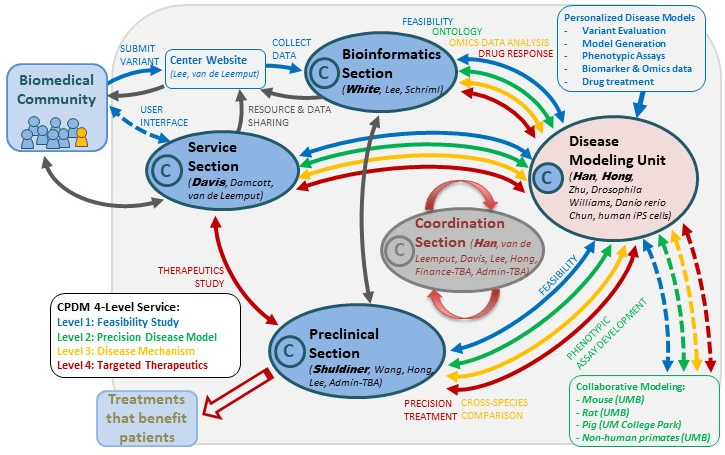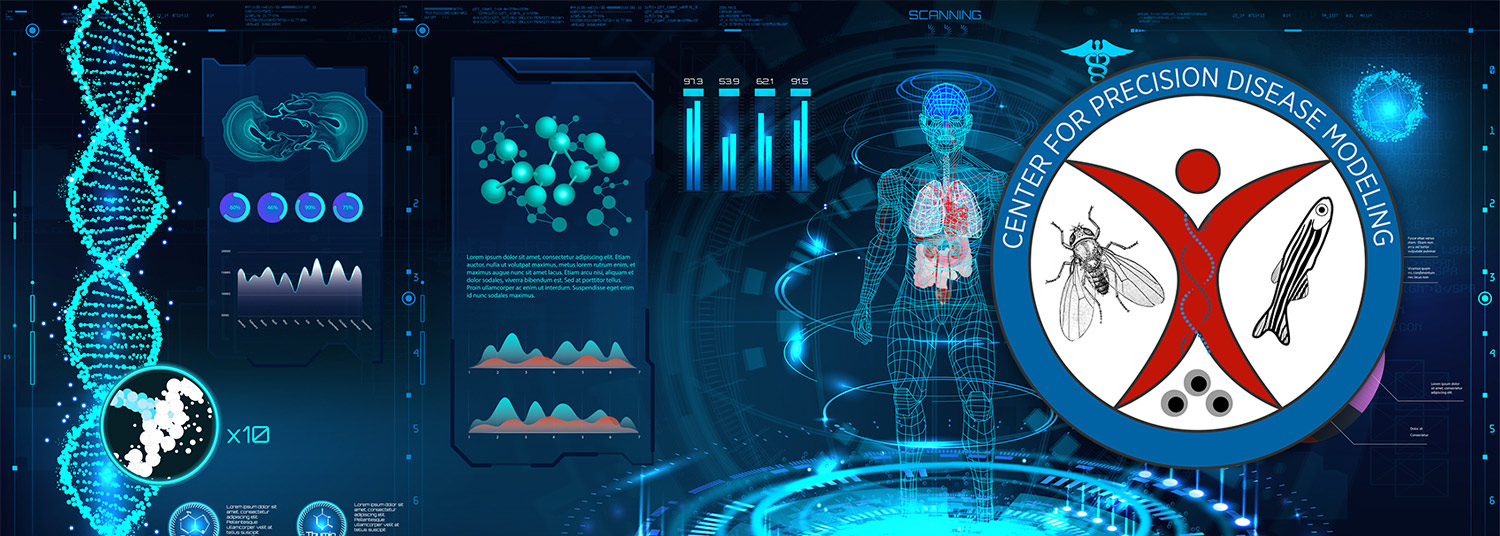Disease Modeling Unit
Our Mission
The mission of the Center for Precision Disease Modeling (CPDM) at University of Maryland School of Medicine (UMSOM) is to serve the biomedical community by offering services that design, generate and leverage Precision Disease models that carry specific patient genetic variants, to ultimately develop targeted treatments that benefit the patients. At the Center, the mission of the Disease Modeling Unit is to generate and use Precision Disease models to discover disease mechanisms and to develop treatments that benefit patients. We use Drosophila melanogaster, zebrafish (Danio rerio) and human-induced pluripotent stem cells (iPSC) to provide functional data for variants' disease association, to study disease mechanism, and to develop and test targeted precision treatments using our models.
Roles of the Disease Modeling Unit and its interaction with the other center sections

The main goals of the DMU are to evaluate the feasibility of variants for Precision Disease modeling, to generate precision models for feasible variants, to establish a causal association for novel genetic variants, to uncover the disease mechanism and to develop and test potential targeted therapeutic treatments. The DMU will use multiple platforms including Drosophila, zebrafish and human iPSC to achieve these goals. In addition to the responsibilities associated with the above goals, the DMU is also responsible for generating proposals for the four service levels and writing the progress reports for both the demo and service projects.
The DMU will interact closely with all the other sections at the Center for Precision Disease Modeling (CPDM), particularly in the following areas:
- Interact with the Preclinical Section to ensure patient clinical data are fully considered at every step of evaluating variant feasibility for modeling, designing animal models, developing phenotypic assays, studying disease mechanisms, as well as developing and testing precision treatments.
- Interact with the Bioinformatics Section for variant feasibility evaluation, animal model data collection and analysis, cross-species omics data comparison, and data sharing.
- Interact with the Coordination Section to increase research community participation in nominating variants.
- Interact with the Resource and Service Section to coordinate the acquisition, validation, and distribution of the CPDM Precision Disease models.

